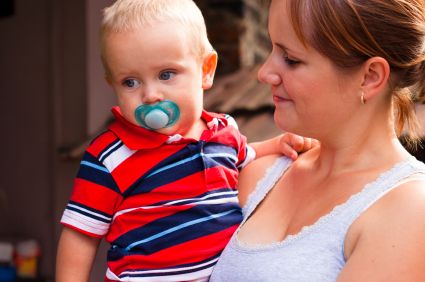Reporters have been scratching their heads for months over the fact that the percentage of women of working age who are actually in the labor force has been declining steadily since the year 2000.
Here are the brute statistics, from Gallup:
From 1975 to 2000, the labor force participation rate — the percentage of the population that is either employed or unemployed and actively seeking work — among U.S. women rose dramatically. But at the turn of the millennium, it began to decline and has been falling ever since.
According to the U.S. Bureau of Labor Statistics (BLS), 59.9% of women aged 15-16 and older were in the labor force in 2000. By 2010, that figure fell to 58.6%, and at the end of 2015, it was even lower, at 56.7%.
Retiring female baby boomers account for a percentage of the shrinking labor force, as does the increasing number of young women enrolling in college. But these demographics don't tell the whole story. A study conducted by Maximiliano Dvorkin and Hannah Shell for the Federal Reserve Bank of St. Louis also discovered a decrease in labor force participation among women in their "prime age" — between 25 and 54. The U.S. used to have one of the highest labor force participation rates among women in this age group, but now it has one of the lowest rates compared with eight developed countries in the study.
Here is a recent effort by the Los Angeles Times to flesh out the numbers with some human stories:
Mari Villaluna never wanted to be a stay-at-home mom. The 36-year-old spent a decade building up a resume as a career counselor and tutor in San Francisco schools after serving in the U.S. Army.
She made about $42,000 at an employment agency, and was regularly sought out by potential employers. After she gave birth to her first child last year, she drew a star on her calendar to mark the day she was supposed to return to work.
“I had a very established career,” Villaluna said. Then, in September, her plan to get a state subsidy for child care fell through, and the single mom couldn’t afford to spend thousands of dollars on private day care. The day she gave up her beloved 9-to-5 job, she cried for hours….
Villaluna’s paycheck fell short of her aspirations. After giving birth, she put her monthly take-home, around $3,000, on one side of a sheet of paper, and on the other wrote down all of her expenses, plus the roughly $2,500 she expected to pay for child care. She’d wind up behind by $15 a month….
Now she’s living on less than $200 a month from the military that she receives because she became disabled while serving, as well as $600 a month from CalWorks, California’s welfare program. She signed up for the benefit after she learned she couldn’t go back to work.
And here is a similar story from the New York Times:
The go-to explanations for why so many men — even in their prime working years — have dropped out of the labor force do not apply to Krystin Stevenson.
At 31 with two children, she doesn’t turn her nose up at jobs that are considered women’s work. She hasn’t been swallowed by the wildfire of opioid addiction, dogged by a brush with the law or sidelined with a disability after years of heaving loads in manufacturing or construction.
Rather, she gave up her $40,000-a-year job as a customer service representative at a real estate firm in the summer of 2015 when her fragile support network collapsed. Her mother, a part-time home health care aide, took care of the children, picking up the older one from elementary school in the afternoon. But after she had a stroke, she was the one who needed to be taken care of, and Ms. Stevenson stepped in to manage her aging mother as well as her young children.
“I ended up just quitting my job,” said Ms. Stevenson, who lives outside Denver. “I was trying to work and help her, but the job wasn’t flexible.”…
In the meantime, she has been paying the bills with a combination of family help, savings, child support from a former partner, temporary unemployment insurance and food stamps.
Now, the moral of these tales that the New York Times and the Los Angeles Times would like to draw is that we need more government-subsidized child care plus perhaps some mandated paid time off so women can attend to family problems. More cynical observers might point out that welfare benefits of various kinds are so generous that both women have decided they don't really need to work. Stevenson, after all, hasn't held a paying job for two years and seems to have no plans to look for one.
But the real story might be what's impossible not to notice: that both Villaluna and Stevenson are mothers, and neither has a husband anywhere in the picture. The percentage of births to unmarried women in the U.S. rose from around 33 percent in 2000 to 40.3 percent in 2015. Maybe life is unfair to women–but it's pretty hard to be the sole family breadwinner and raise children in a fatherless household. And it really doesn't seem a good idea, if you have a comfortably-paying but far from super-lucrative job as Villaluna had until just recently, to embark on family formation without a man to put a ring on it. That old-time stigma on out-of-wedlock childbirth had some value to it.
And its decline might have a lot to do with the increasing numbers of women leaving the labor force.


